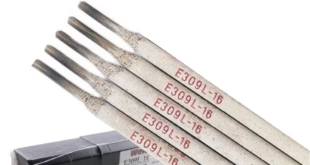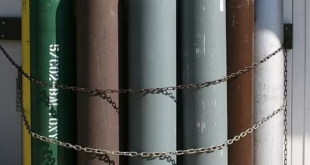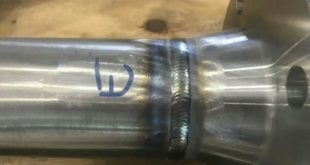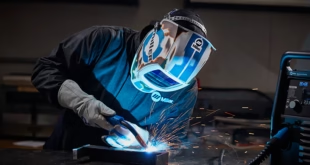Weldability of Metals Basic Concept!
Introduction
Welding has been an essential skill in metalworking for centuries, allowing us to join metals together to create strong, functional structures. From bridges and cars to pipelines and airplanes, welds are literally holding the world together. But while welding may seem straightforward, not all metals are created equal in how easily they can be welded. Some metals bond perfectly under the torch, while others crack, distort, or refuse to fuse altogether. This is where the concept of weldability comes in. Weldability refers to the ability of a metal to be welded under specific conditions, resulting in a strong, defect-free joint.
Understanding the weldability of metals is crucial for any successful welding project. Whether you’re a welder or someone involved in metal fabrication, having a grasp of weldability ensures that you know what to expect when working with different metals. Factors like a metal’s chemical composition, mechanical properties, and the welding method used play pivotal roles in determining weldability.
What is Weldability?
Weldability, in simple terms, is the capability of a material to be welded into a strong, durable joint without any defects such as cracks, porosity, or distortion. It’s an essential concept that governs the quality of welded structures. But the ease with which metals can be welded isn’t universal—certain metals will always be easier to weld than others due to their intrinsic properties.

Definition and Meaning of Weldability
At its core, weldability measures how well two or more pieces of metal can be joined using welding techniques, without negatively affecting the metal’s integrity. It’s more than just fusing metal together. It’s about ensuring that the weld zone—where the pieces meet—has a strength that is comparable to the base metal and doesn’t have flaws like cracks or pores that could lead to failure under stress.
Factors Affecting Weldability
Several factors come into play when determining a metal’s weldability:
- Composition of the metal: The elements present in a metal influence its behavior under heat.
- Welding process used: Different methods (MIG, TIG, Stick) have different impacts on weldability.
- Pre-heating and cooling conditions: How fast or slow a metal is heated or cooled can lead to stress cracks or warping.
For example, low-carbon steels are generally more weldable compared to high-carbon steels, which require more precise control over heat input to avoid issues like cracking.
Metallurgical Factors Influencing Weldability
The metallurgical properties of a metal—its structure and behavior at the microscopic level—play a pivotal role in how easily it can be welded. These factors can affect how the metal responds to heat, stress, and pressure during the welding process.
Composition of Metals
A metal’s chemical composition has the most significant influence on weldability. Metals can be pure or alloyed with other elements to give them specific characteristics. For example, steel is often alloyed with carbon, which can either increase or decrease its weldability depending on the amount. Higher carbon content makes steel harder but less ductile, and this can lead to cracking during welding. Similarly, metals like aluminum and titanium have different alloying elements that can complicate the welding process by forming oxides or brittle compounds.
Crystal Structure and Phase Transformations
Metals are made up of crystals, and these crystals can change when exposed to high heat, such as during welding. Phase transformations occur when the atomic structure of the metal shifts from one form to another. Some phases, like martensite in steel, are more prone to cracking or embrittlement, making the metal harder to weld. Understanding how a metal’s crystal structure changes with heat helps in selecting the right welding process and pre-heating/cooling methods to avoid defects.
Heat Affected Zone (HAZ)
The Heat Affected Zone, or HAZ, is a critical area in any weld. It refers to the part of the metal surrounding the weld that has been heated but not melted. The properties of the metal in the HAZ can change due to the exposure to heat, leading to weaker spots that can crack or fail under load. Managing the size and characteristics of the HAZ is essential to maintaining the weld’s strength.
Mechanical Properties and Weldability
In addition to metallurgical factors, a metal’s mechanical properties—how it reacts to forces like stress and strain—greatly affect its weldability.
Ductility and Toughness
Ductility refers to a material’s ability to deform under stress without breaking. Toughness measures how much energy a material can absorb before it fractures. Metals with high ductility and toughness, like mild steel, are much easier to weld because they can handle the stresses induced by welding without cracking or distorting. On the other hand, metals that are brittle or low in toughness may fracture during or after welding.
Hardness and Strength of Metals
Hardness and strength often go hand in hand with weldability. A hard metal may resist wear, but it can also be more prone to cracking if it’s too brittle. High-strength metals, such as certain types of tool steel, often require special welding techniques and filler materials to ensure that the weld holds up to mechanical stresses.
Stress and Strain During Welding
When welding, the intense heat causes expansion and contraction, putting the metal under significant stress. This stress can cause distortion, warping, or even cracks, especially in metals that are sensitive to thermal expansion. Understanding a material’s behavior under stress and strain helps in selecting the right welding technique and in managing the heat input during the welding process.
Common Metal Types and Their Weldability
Different metals exhibit varying levels of weldability, and understanding the specific characteristics of each type is critical to successful welding.
Steel and Its Weldability
Steel, especially mild steel (low-carbon steel), is among the most weldable metals due to its balanced properties of strength, toughness, and ductility. Low-carbon steel is widely used in construction and manufacturing because it can be welded easily with minimal risk of cracking or distortion. However, high-carbon steel, which is much harder and stronger, presents more challenges in welding, requiring careful heat control to prevent cracking.
Aluminum and Its Weldability
Aluminum is known for being lightweight and corrosion-resistant, but it’s more difficult to weld due to its high thermal conductivity and the formation of an oxide layer on the surface. The oxide layer must be removed before welding, and special techniques, like TIG welding with a high-frequency current, are often used to achieve strong, defect-free welds.
Copper and Its Weldability
Copper is a metal with excellent electrical and thermal conductivity, but these same properties make it challenging to weld. The high heat input required to weld copper can lead to warping or burn-through, and copper’s tendency to work harden means that it can become brittle if not handled properly.
Stainless Steel and Its Weldability
Stainless steel is prized for its corrosion resistance, but welding it requires care. The material’s high chromium content makes it prone to cracking and distortion, especially when cooling rates aren’t managed properly. However, with the correct filler materials and welding technique, stainless steel can be welded to produce strong, durable joints.
Weldability of Ferrous vs Non-Ferrous Metals
The world of metals is broadly divided into ferrous (iron-containing) and non-ferrous metals, and these two groups behave quite differently when it comes to welding.
Ferrous Metals
Ferrous metals, like steel and cast iron, are generally easier to weld, especially lower-carbon varieties. Iron’s ability to handle heat well makes these metals more forgiving during the welding process. However, cast iron and high-carbon steels require careful temperature control to avoid cracking or distortion due to their brittleness.
Non-Ferrous Metals
Non-ferrous metals, like aluminum, copper, and titanium, are more challenging to weld. These metals tend to conduct heat quickly, which can cause issues like warping or burn-through. Additionally, they often form oxides on their surfaces, which must be removed before welding to ensure a clean, strong joint.
Weldability Tests
Testing the weldability of metals is an important step to ensure that the welds will be strong, reliable, and free from defects.
Types of Weldability Tests
- Bend Test: This test evaluates a metal’s flexibility and ductility by bending a welded specimen to see if it can endure deformation without cracking.
- Tensile Test: The tensile test measures the strength of a welded joint by pulling it apart until it breaks. This test helps to determine the joint’s resistance to pulling forces.
- Impact Test: This test measures the energy absorbed by a welded joint when it is struck with a heavy load. It’s particularly important for materials that will be used in cold or harsh environments.
Importance of Testing Weldability
Weldability tests are essential to predict how a welded joint will behave under stress and in real-world applications. Testing helps identify potential problems early, allowing welders to adjust their techniques or material choices to ensure a successful weld.
Challenges in Welding Metals with Poor Weldability
Even with the best techniques and knowledge, some metals are inherently more difficult to weld. These metals often present challenges that can compromise the strength or quality of the welded joint.
Cracking, Distortion, and Other Issues
One of the biggest problems when welding metals with poor weldability is cracking. Metals like cast iron and high-carbon steel are prone to cracking due to their brittleness. Distortion is another common issue, especially with thin metals or those with high thermal expansion rates, like aluminum.
Techniques to Improve Weldability
There are ways to improve the weldability of challenging metals. Preheating the metal before welding can reduce the risk of cracking by allowing for a slower, more controlled cooling process. Additionally, post-weld heat treatments can relieve internal stresses caused by the welding process. Using the appropriate filler materials and adjusting the welding parameters, such as reducing the heat input, can also help avoid defects.
For metals like aluminum, utilizing techniques like TIG (Tungsten Inert Gas) welding, where the welder has better control over the heat and weld pool, can dramatically increase the chances of achieving a successful weld. Similarly, ensuring the correct joint design—whether it’s a butt joint, lap joint, or T-joint—can improve the overall weld integrity for materials that are more challenging to work with.
FAQs
What is the main factor that affects the weldability of metals?
The primary factor influencing weldability is the metal’s chemical composition. Metals with lower carbon content, like mild steel, are generally more weldable, while metals with higher carbon or alloying elements may require specialized techniques due to their tendency to crack or distort under heat.
Can all metals be welded?
Not all metals can be easily welded. While common metals like steel, aluminum, and copper are weldable with the right techniques, metals like cast iron and magnesium present significant challenges and often require specialized methods or equipment.
What is the Heat Affected Zone (HAZ) in welding?
The Heat Affected Zone (HAZ) is the area of the metal surrounding the weld that has been exposed to heat but has not melted. The properties of the metal in the HAZ can change due to the high temperatures, potentially becoming more brittle or prone to cracking.
Why does aluminum require special techniques for welding?
Aluminum has high thermal conductivity, which means it dissipates heat quickly, making it more prone to warping or burn-through during welding. Additionally, aluminum forms an oxide layer that must be removed before welding to ensure a clean, defect-free joint.
How can I improve the weldability of difficult metals like high-carbon steel?
To improve the weldability of high-carbon steel, you can use preheating to reduce the risk of cracking, select appropriate filler materials, and control the heat input carefully to prevent issues like hardening or brittleness in the weld zone.
Conclusion
Weldability is a foundational concept for any welding project. Knowing how different metals respond to the heat, pressure, and techniques used in welding can be the difference between a successful weld and a compromised structure. Factors such as metallurgical properties, mechanical characteristics, and the specific type of metal involved all play significant roles in determining how easy or difficult a material is to weld. While common metals like mild steel may weld easily, other materials like aluminum and high-carbon steel require additional precautions and techniques to ensure strong, defect-free welds.
Being aware of the potential challenges posed by different metals, and using appropriate methods to overcome them, allows welders and fabricators to produce high-quality joints that stand the test of time. Weldability isn’t just about knowing how to apply heat; it’s about understanding the science behind each material and how to adapt your approach to create the best possible bond.
 Welding of Welders All about Welding and Welders
Welding of Welders All about Welding and Welders



